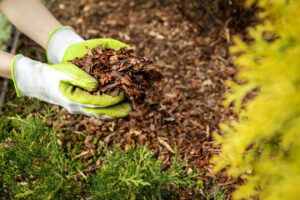There’s a lot to love about Chandler Bbq from the tenderness of brisket to the tangy goodness of sauce. But there’s a lot of disagreement over what exactly barbecue is.

Generally speaking, those who draw a line between grilling and bbq define it as meat cooked low and slow over a period of hours. Others think it’s more about the social event than the cooking method.
From the earliest days of humanity, humans have been cooking with fire. Whether it was over an open flame or hot coals, the resulting food had a unique flavor that is now known as barbecue. Over time, the technique of grilling, smoking and baking meats and vegetables was adopted by many cultures throughout the world. Today, bbq is a widely accepted term used with various regional and national variations to describe the several methods of cooking with fire and smoke. It also refers to the cooking devices associated with these methods, a broad cuisine that includes foods cooked by these techniques, and even social events or picnics at which these foods are served.
The word barbecue itself is derived from a Caribbean word, barbacoa. It is believed that the term was first used by explorer Gonzalo Fernandez de Oviedo y Valdez in 1526, though it had been in use for a number of years before that.
It seems likely that this type of raised platform was a common sight in the region before and after colonization, as it is still used by natives for cooking whole animals like sheep and cattle.
The modern barbecue, with a plethora of spices and sauces, is much different than the roasting and frying that was the original form of barbecue. It is now commonly served on a paper plate, in a restaurant or at home, and it usually contains some sort of meat and a lot of fat. It is often served with sweet ketchup-based sauce, but it can be made with any kind of sauce that the cook prefers.
In addition to being a popular way to cook, barbecue has also become a cultural phenomenon that is celebrated in festivals and other events all over the country. Some of these are regional, and some celebrate the entire barbecue experience.
Styles
There is a wide range of regional styles when it comes to barbecue. Most began based on the ingredients available and cooking methods used in the area, but over time they developed their own identity. From smoky brisket in Texas to Korean pork skewers, there is something for everyone.
A close look at the defining characteristics of each BBQ style will show why it is distinct from others. For example, North Carolina has two main styles, both of which focus on pork but differ in how the meat is prepared and what parts of the animal are used. Eastern style barbecue uses chopped whole hog barbeque served with a pepper and vinegar sauce (via NCpedia). Meanwhile, Western Carolina BBQ focuses on pork shoulder with a red barbecue sauce containing ketchup and other ingredients such as Worcestershire sauce and chili powder (via CM Library).
The state of Kentucky has several distinct regional styles, but all feature meat and a sauce that is thick, sweet and tomato-based. Mutton is a popular choice in the Bluegrass state’s western region, while Boston butts and shredded pork sandwiches covered in a rich sauce are more common to the south-central section. Kentucky also has a unique take on the region’s famous pulled pork sandwich by using ketchup as one of its sauce bases, reports CBS Local.
Kansas City has a reputation for being one of the best barbecue destinations in America, and it’s no surprise that its BBQ is rooted in the Midwest. The region’s style of barbecue tends to use dry rubs and avoid the heavy use of sauce, but it also specializes in smoked meats like ribs and brisket.
Memphis, Tennessee is another well-known barbecue destination. Its style of barbecue combines the use of dry rubs and a thick, sweet sauce that is a little less messy than other regional styles of BBQ. It is also known for its steamed buns filled with pork belly and pickled vegetables. In addition, many restaurants in the region serve jerk chicken or pork, which is marinated with spices such as allspice, thyme and scotch bonnet peppers and then grilled.
Sauces
A good barbecue sauce can take grilled chicken, pork or beef from good to great. But you don’t want to settle for any old bottle from the grocery store. Instead, turn to the pros—serious grillmasters in their own right. They’ve sampled 11 brands to help you find the best barbecue sauce for your meat.
The experts say that the most important thing is balance. A good sauce has a balance of salty, sweet, sour and spicy elements. This is especially true with tomato-based sauces. If you go too heavy on the tomato, the taste can become cloying. To create balance, many sauces include vinegar and some sweetener like honey or molasses. Some also include a bit of fruit or smoke to add flavor and depth.
Most traditional bbq sauces are tomato based but there are other kinds as well. For example, teriyaki sauce contains high concentrations of sugar and pineapple or citrus. Korean barbecue sauce is tangy and sweet with soy sauce and ginger. And there are sauces that combine regional styles to make unique flavor combinations, such as the playground yellow mustard of South Carolina and Big Bob Gibson’s mayo-based Alabama white sauce.
Another important consideration is the texture of your barbecue sauce. A thick sauce is better for brushing onto grilled meat than a thin sauce that can drip. The thickness of the sauce will also determine whether it’s a condiment or a base for a recipe.
Some of the best sauces are also healthy. The tomato base of most bbq sauces provides lots of lycopene, an antioxidant known to protect against certain cancers and lower cholesterol levels. Some bbq sauces are low in sodium and also offer the benefit of added fiber from cornstarch.
Lastly, consider whether the ingredients in your bbq sauce are natural or processed. Adding processed ingredients can dilute the taste of your sauce and may even cause it to burn when you apply it to your food. Ideally, the bbq sauce you use should be made with simple ingredients that are easily found in your pantry.
Sides
A great barbecue isn’t complete without a delicious spread of sides. Whether you’re serving sweet and smoky pork ribs, spicy whiskey barbecue chicken, or even simple burgers and hot dogs, these side dishes will elevate your grilling experience. These 34 recipes for Southern BBQ sides include classics like mac and cheese, baked beans, and coleslaw as well as fresh takes on cookout staples. Try a grilled potato salad or an inventive pasta salad for a lighter meal, or go all-in with this creamy barbecue corn and zucchini dish that features spicy Andouille sausage and homemade white bread.
Potatoes are a barbecue staple and this recipe for crispy potato salad is sure to be a crowd-pleaser. This simple potato salad is tossed in a flavorful vinaigrette that includes mustard, mayonnaise, and pickles for a rich texture. The addition of radishes, cucumbers, and feta adds a refreshing twist to this creamy salad. A trio of seeds (sunflower, poppy, and sesame) provides a nice crunch to this hearty salad.
Coleslaw is a classic barbecue side dish and this recipe features a tangy Asian-inspired dressing that pairs well with smoky sauces. This version of slaw uses sauerkraut, which adds a distinct flavor and also brings the benefit of gut-friendly probiotics.
Having an array of sides on hand can also help your barbecue to feel more special, rather than just a weeknight dinner on the patio. If you’re hosting friends or family, try a recipe for collard greens or macaroni salad that will make your guests feel special and provide them with a healthy option as well.
While a perfect bourbon-glazed brisket or a tender and juicy rack of ribs are the main attractions at any barbecue, these Southern barbecue sides will help to take your feast to the next level. These classics and new twists on cookout favorites will surely satisfy all of your party-goers’ cravings. Whether you’re serving pulled pork, a classic fried chicken breast, or smoky grilled vegetables, these barbecue sides will be sure to impress your guests.








